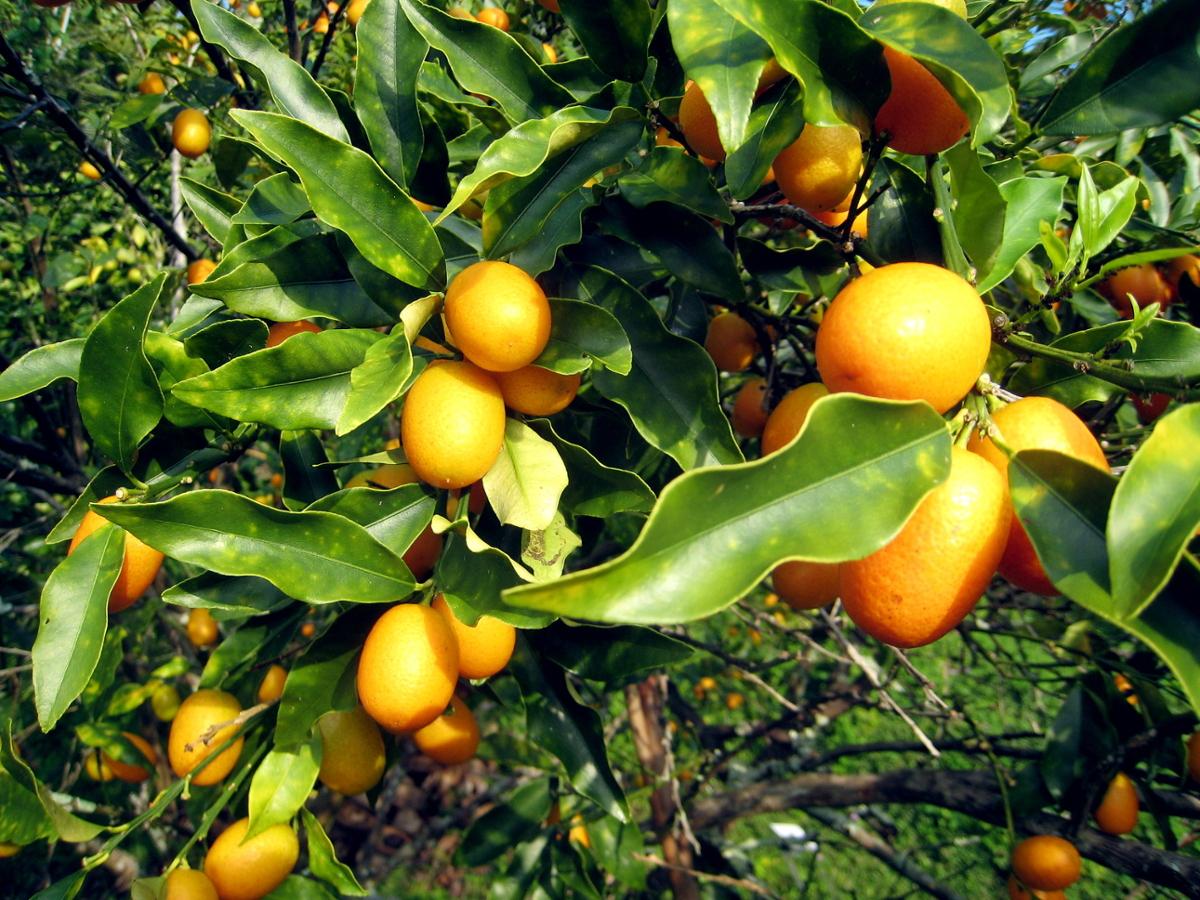The first thing you should know is that the kumquat is a fruit. But I’ll get back to that in a minute. Right now, I’d like to ask: do you like Sour Patch Kids? It’s a popular gummy candy coated with sour sugar, though that sourness quickly gives way to a sweet, fruity flavor. Or maybe you prefer to suck on lemon drops, and if that’s not your thing, perhaps you enjoy grapefruit with a sprinkle of sugar.
Have I made you hungry? Then let me suggest that you munch on some kumquats. The kumquat is the smallest citrus fruit, about the size and shape of a large grape, and usually orange. Native to eastern Asia, where they’ve been a staple of cuisine for many centuries, kumquats came to Europe in the mid-1800s, and then on to North America soon after. You can find them where citrus is usually grown, in places such as Florida, California, and Texas.
Kumquats are freshest in winter, and like oranges and lemons, they’re high in vitamin C. If you’re lucky enough to see them on the tree, take a good, long look—a mature fifteen-foot kumquat tree can produce thousands of kumquats at once!
Think of them as a healthier alternative to gummy candy. The peel of a kumquat is not only edible but sweet, and it balances the acidic, tart pulp within. And though you should be sure to wash them first, it’s easy to pop one in your mouth to satisfy your craving for a sweet and sour snack. Want to save some for later? They can easily be preserved, and made into tasty jams or jellies.









